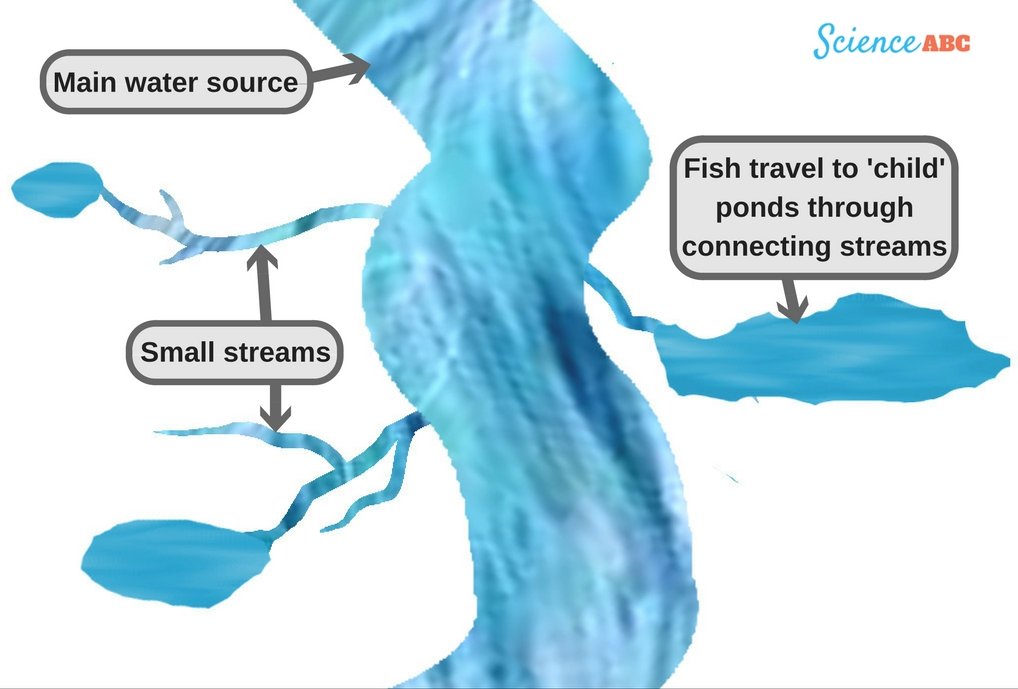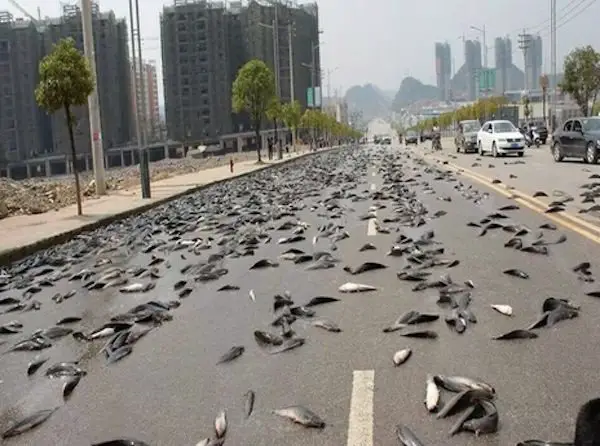In many cases, fish do not naturally end up in ponds on their own. Fish are often introduced to ponds by humans for various reasons, such as recreational fishing, aquaculture, or simply for aesthetic purposes. Let’s explore the different ways fish can find their way into ponds.
1. Stocking by Humans
One of the most common ways fish end up in ponds is through stocking by humans. This is done intentionally to create a suitable environment for fishing or to enhance the biodiversity of the pond. Fish are usually purchased from hatcheries and then released into the pond. Common fish species that are stocked include trout, bass, catfish, and bluegill.

Credit: www.scienceabc.com
2. Natural Migration
Some fish species have the ability to migrate on their own and may find their way into ponds through natural means. This could happen if a pond is connected to a river or stream that fish use for migration. During periods of high water levels or floods, fish may be carried into ponds from nearby water bodies.

Credit: www.sciencefocus.com
3. Birds and Other Predators
Birds and other predators can also play a role in introducing fish to ponds. Birds like herons or kingfishers may catch fish from nearby water bodies and drop them accidentally or intentionally into ponds. While this may not be the most common way fish end up in ponds, it can still happen in certain situations.
4. Flooding Events
During heavy rainfall or flooding events, fish can be swept away from their natural habitats and deposited into ponds. This can happen when rivers or streams overflow and carry fish along with the current. While this is a more unpredictable way for fish to end up in ponds, it is a natural occurrence that can contribute to the fish population in ponds.
5. Human Activities
Human activities such as accidental release of fish from aquariums or intentional release of unwanted pets can also lead to fish ending up in ponds. Some fish species that are popular in the aquarium trade can survive and reproduce in ponds, potentially establishing a self-sustaining population over time.
6. Natural Reproduction
Once fish are introduced to a pond, they can reproduce naturally if the conditions are suitable. Fish lay eggs that hatch into fry, which grow into mature fish over time. This natural reproduction process can help sustain the fish population in ponds without the need for additional stocking.
7. Invasive Species
In some cases, fish may end up in ponds as invasive species. These are species that are not native to the area and can cause harm to the ecosystem. Invasive species can be introduced accidentally through human activities or natural means, and they can outcompete native fish species for resources in the pond.
8. Benefits of Fish in Ponds
Having fish in ponds can provide several benefits. They can help control insect populations, improve water quality by consuming algae, and contribute to the overall biodiversity of the ecosystem. Fish also serve as food for birds and other wildlife, creating a balanced and dynamic environment within the pond.
Conclusion
There are various ways fish can end up in ponds, whether through human intervention, natural migration, or accidental means. Understanding how fish populate ponds can help us appreciate the interconnectedness of ecosystems and the importance of maintaining a healthy balance of species within these habitats.
So, the next time you see fish swimming in a pond, remember that their presence is the result of a complex interplay of factors that contribute to the vibrant and diverse ecosystems we encounter in nature.





